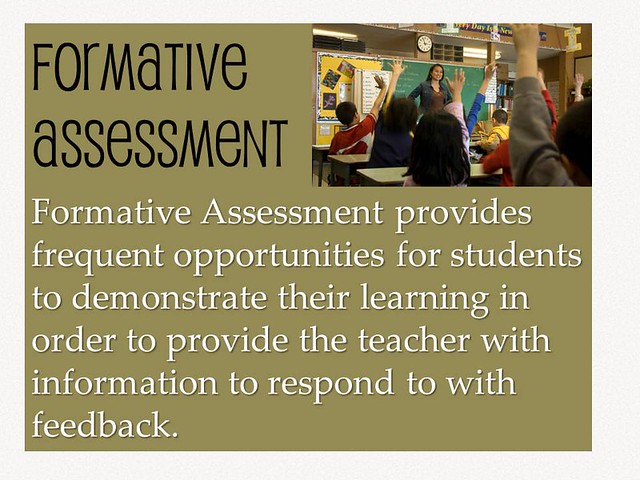Chapter #11: Engaging Teachers
and Students in Learning and Self-Reflection
 |
| Photo credit to Ken Whytock on Flickr |
Focus Question #2: How can
teachers and students use digital portfolios as tool for learning?
One of the most important parts
of the educational process is to have the objective information needed to make
a realistic assessment of its effectiveness. How much have the students learned?
What skills did they develop? How effective were the instructional strategies,
teaching methods as well as the technological procedures used for teachers? Where
did they fail? As a teacher, what do I have to change to help develop the
capabilities of each student fully? What are the learning style, preferences and strengths
of each of them? We need a realistic feedback to make the
changes and improvements necessary to raise teaching-learning process to a
higher quality level.
In this sense, the digital portfolios are an effective way
to assess teachers’ and students’ accomplishments. For teachers it is an
individually prepared and personalized collection of their work, educational
approach, philosophy about education, achievements, goals and expectations. For
students it is a computer-based collection of their performance over time.
In my opinion, this tool not only
shows students progress, but also increases their engagement; promotes a
continuing conversation about learning between teachers, parents, and students;
and extends academic lessons beyond school walls. It also offers an opportunity
for students to showcase skills and kinds of intelligence that often are not
measured on standardized tests and at the same time each of them has the chance
to show their creativity and their own personal stamp.
One of the most important
ingredients in a portfolio is the student’s reflection on their work. Student reflections
help teachers discover and observe what the students are really experiencing,
thinking about, questioning, wondering about, trying, and attaining. Therefore,
a portfolio provides a more comprehensive view of each student’s learning. As
students consistently gather and reflect on their work, educators develop a
clear picture of the learning that is taking place and are better able to
identify areas that need attention.
Tech Tool Link: SurveyMonkey
This website offers the
possibility to create templates for different surveys, compute the information,
analyze the results and send them to wherever we need. This could be a useful
resource to involve students in preassessment process and a way for teachers to
determine what they know, what skills they have, what they would like to learn
and what they think about important academic topics. In this way teachers could make better decisions about the
topics they will teach as well as the methods, procedures, resources and
evaluative techniques they will used.
Summary and Personal Connection:
For me, a person who come from an
underdeveloped country, where teachers still store the information in files,
not exactly digital, and these at the same time on shelves made of different
materials, the word portfolio evoked the image of a huge folder full of papers,
difficult to transport and in constant danger of being eaten by moths. That is
why I appreciate so much the great possibilities offered by tools such as
digital portfolios for both teacher and students.
I am delighted to know that I can
count on these technological resources that support active roles by students in
the learning assessment process and enrich their learning. While the paper is
static, the digital format has the ability to be updated, improved and enriched
constantly, so it is more interactive. In addition, the digital portfolio can
identify me as a competent professional and become the key that will open for
me new and better employment opportunities.
 |
| Photo credit to nathangibbs on Flickr |
- Maloy, R.W., Verock-O'Loughlin, R., Edwards. S.A.,&Woolf, B. P. (2011). Engaging Teachers and Students in Learning and Self-Reflection. Transforming Learning with New Technologies (pp. 310-313). Boston: Pearson/Allyn and Bacon.

